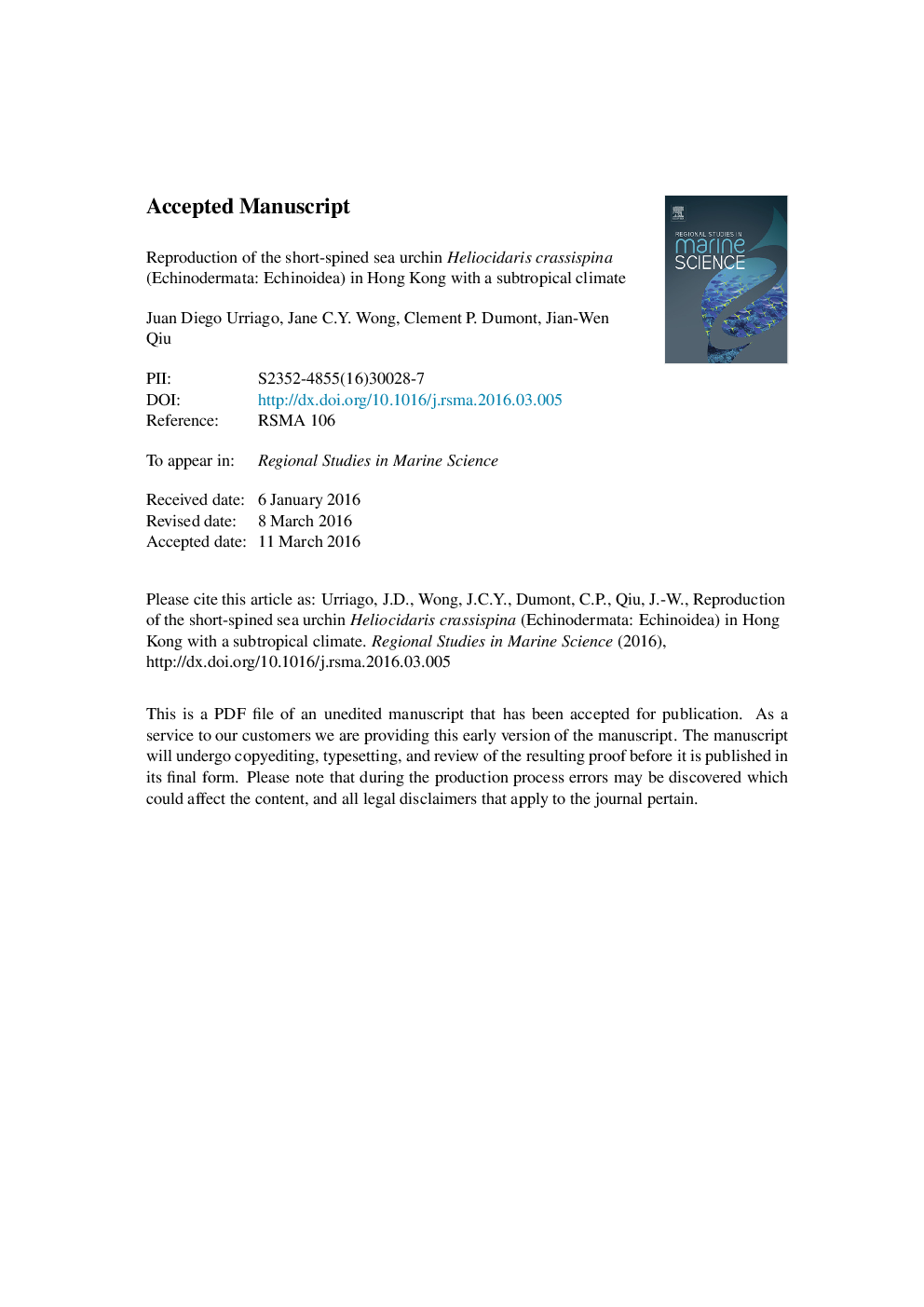| Article ID | Journal | Published Year | Pages | File Type |
|---|---|---|---|---|
| 5758187 | Regional Studies in Marine Science | 2016 | 32 Pages |
Abstract
Population density presumably serves as a negative feedback by modulating growth and reproduction. However, such density-dependent mechanisms have not been examined in most commercially exploited populations. In the present study, we evaluated how population density might affect the reproductive pattern of the commercially harvested sea urchin Heliocidaris crassispina at three sites with different densities in Hong Kong (Cape d'Aguilar, Sheung Sze Wan and Nine Pins). Monthly measurements of the gonad index and histological observations showed that the three populations exhibited a similar seasonal reproductive pattern, with the initiation of gametogenesis in winter (November) and maturation by late winter (March). Spawning took place over 8 months from March to October in Hong Kong, and lasted considerably longer than H. crassispina in more temperate regions. The gonad index was affected by density, with urchins in Cape d'Aguilar (the higher density site) having a lower mean value than those in the other two sites with lower densities. These results indicate that factors affecting density may influence reproductive output of H. crassispina, and such effect should be taken into account when considering the use of sea urchin refugia to enhance the stock.
Related Topics
Physical Sciences and Engineering
Earth and Planetary Sciences
Oceanography
Authors
Juan Diego Urriago, Jane C.Y. Wong, Clement P. Dumont, Jian-Wen Qiu,
